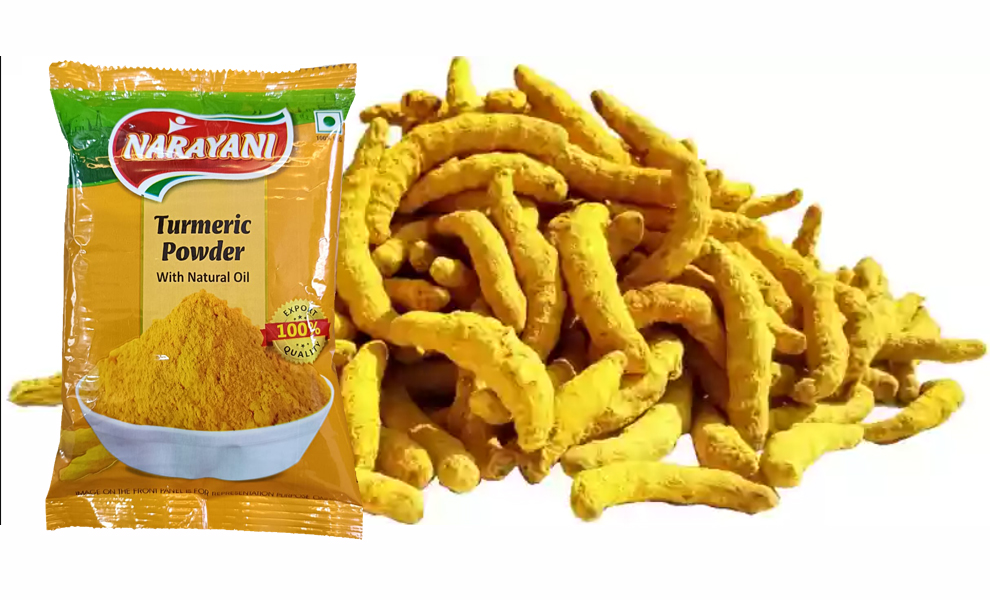
Manufacturing Turmeric Powder (haldi powder) in a commercial setting involves a systematic process to ensure high quality, consistency, and safety. Here's an overview of the typical steps involved in the industrial production of turmeric powder:
1. Raw Material Selection and Procurement:
Source Quality Turmeric: The quality of the turmeric root is critical. Select high-quality turmeric rhizomes, often sourced from regions known for their turmeric cultivation, such as India.
Supplier Management: Establish relationships with reliable suppliers to ensure a consistent supply of high-quality turmeric.
2. Cleaning and Preparation:
Washing: The turmeric rhizomes are thoroughly washed to remove dirt, soil, and any foreign matter. This is typically done using industrial washing machines.
Peeling (Optional): Some processes may involve peeling the turmeric rhizomes to remove the outer skin, although this step may be omitted in certain methods.
Cutting: The cleaned rhizomes are cut into smaller pieces or slices. This helps in uniform drying and reduces processing time.
3. Drying:
Blanching (Optional): In some processes, turmeric rhizomes are blanched (briefly boiled) before drying. This can help in reducing the raw smell and improving color retention.
Drying Methods:
- Solar Drying: In sunny climates, turmeric slices can be dried under the sun on drying racks.
- Mechanical Drying: More commonly in industrial settings, turmeric is dried using mechanical dryers such as:
- Tray Dryers: Turmeric slices are spread on trays and dried using heated air circulation.
- Fluidized Bed Dryers: Turmeric slices are dried in a chamber where hot air is blown through the material, making it "fluidize" and dry evenly.
- Rotary Dryers: A rotating drum with heated air dries the turmeric slices as they move through the drum.
- Drying Temperature: Ensure that the drying temperature is carefully controlled to preserve the active compounds in turmeric.
4. Grinding:
Milling: Once the turmeric slices are completely dry, they are ground into a fine powder. This can be done using:
- Hammer Mills: To break down the dried turmeric into smaller particles.
- Pin Mills or Pulverizers: To grind the material into a fine powder.
Particle Size Control: Achieve the desired particle size through adjustment of grinding equipment and screening.
5. Sifting and Classification:
Sifting: The ground turmeric powder is sifted to remove any coarse particles and ensure a uniform texture.
Classification: The powder may be classified into different grades based on particle size and quality.
6. Blending (Optional):
Standardization: In some cases, turmeric powder may be blended to achieve consistent color and flavor. This involves mixing different batches or grades of turmeric powder to meet specific quality standards.
7. Quality Control:
Testing: Conduct rigorous quality control tests to ensure the turmeric powder meets safety and quality standards. Common tests include:
- Color Analysis: Using instruments like colorimeters to ensure the right shade.
- Microbial Testing: To check for contaminants such as bacteria, yeast, and molds.
- Pesticide Residue Testing: Ensuring the product is free from harmful pesticide residues.
- Curcumin Content Testing: Measuring the curcumin content, which is a key indicator of quality.
8. Packaging:
Packaging Materials: Use high-quality, food-grade packaging materials that protect the powder from moisture, light, and air.
Filling: The turmeric powder is filled into containers such as bags, pouches, or jars.
Labeling: Ensure accurate labeling with information such as ingredient list, nutritional facts, and expiration date.
9. Storage and Distribution:
Storage: Store the packaged turmeric powder in a cool, dry place to maintain freshness and prevent spoilage.
Distribution: Plan an efficient distribution system to deliver the product to retailers or customers while maintaining quality.
10. Compliance and Certification:
Regulatory Compliance: Ensure the manufacturing process adheres to local food safety regulations and standards.
Certifications: Obtain necessary certifications such as ISO, HACCP, or organic certifications if applicable.
11. Continuous Improvement:
Monitoring: Continuously monitor the production process to identify areas for improvement.
Innovation: Stay updated with industry trends and technological advancements to enhance product quality and operational efficiency.
Conclusion
The commercial manufacturing of Turmeric Powder involves careful attention to detail at each stage of the process, from sourcing raw materials to final packaging. By following these steps and adhering to quality standards, companies can produce high-quality turmeric powder that meets customer expectations and regulatory requirements.


